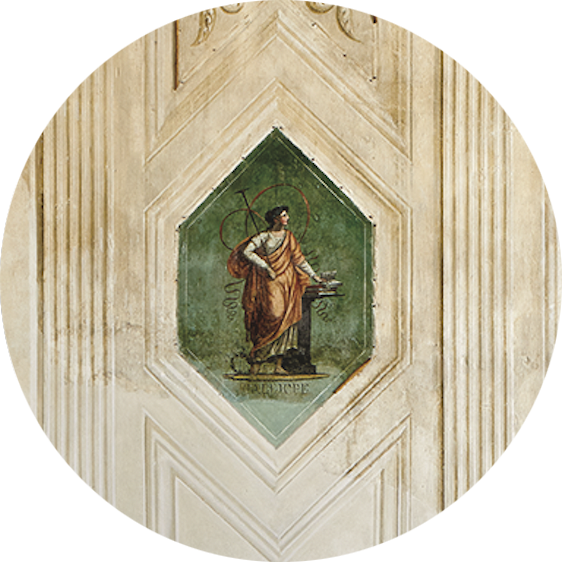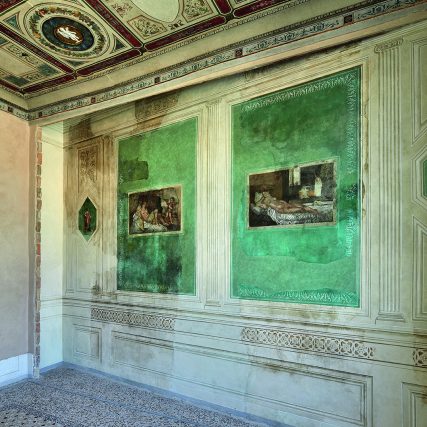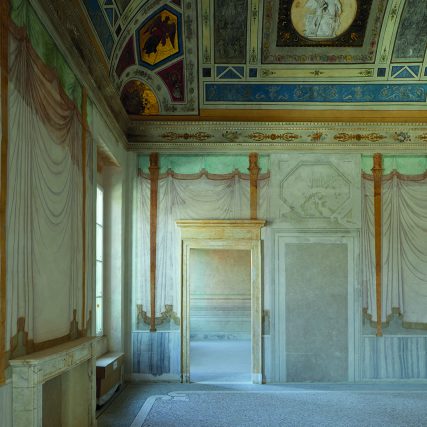
The restoration of Palazzo Guiccioli, a complex building that grew over time through distinct phases of construction, required a significant and delicate conservation effort for it to be returned to its former splendour. The palace has been repurposed as a museum, a site of memories of nineteenth-century Ravenna, where objects, documents, and stories of the people who lived there tell of Romantic feelings, libertarian ideals, and cultural values conveying knowledge, inspiration, and stories of identity.
Thanks to a careful study of material and documentary sources, we can now appreciate the glories of a rising family that repeatedly consolidated its social rank through new constructions, as is visible in the succession of fully decorated rooms documenting the evolution of taste and style. While, with their lush proliferation of hybrid vegetal, animal, and fantastic elements, the grotesques reflect the influence of Roman taste originating in the discoveries of the Domus Aurea, the capriccio scenes in exotic settings mark the advance of the Rococo style or Barocchetto. In addition, the arrangement of the ceilings on the piano nobile attests to the magnificence of the neoclassical interventions that ensured decorative coherence well into later periods.
Entirely unique is Byron’s study or studiolo, decorated to the instructions of the Poet himself, featuring Titianesque representations in the panels representing Danae and Venus. The traces of earlier damage have been left visible so as to document the rediscovery of these decorations.







